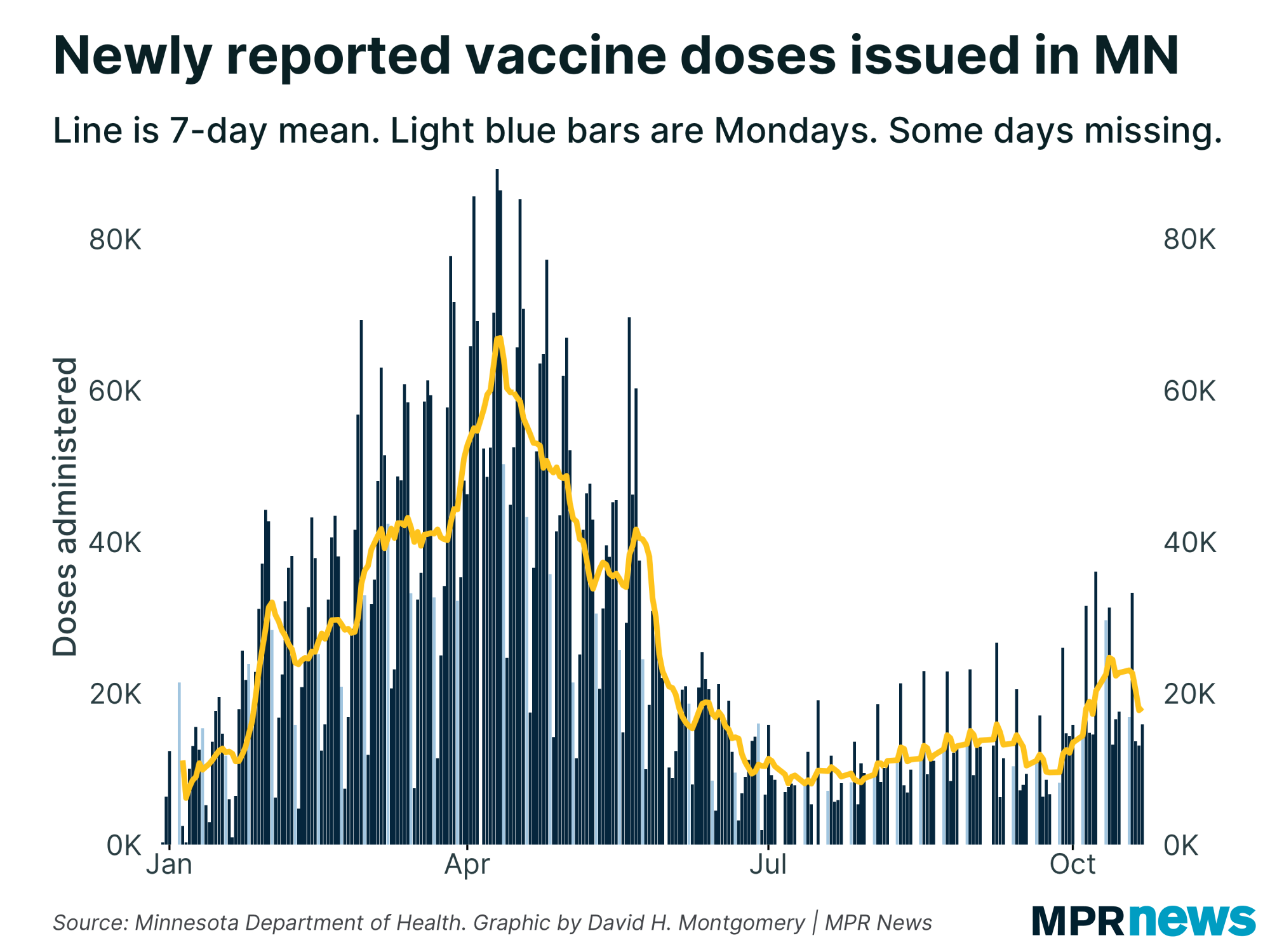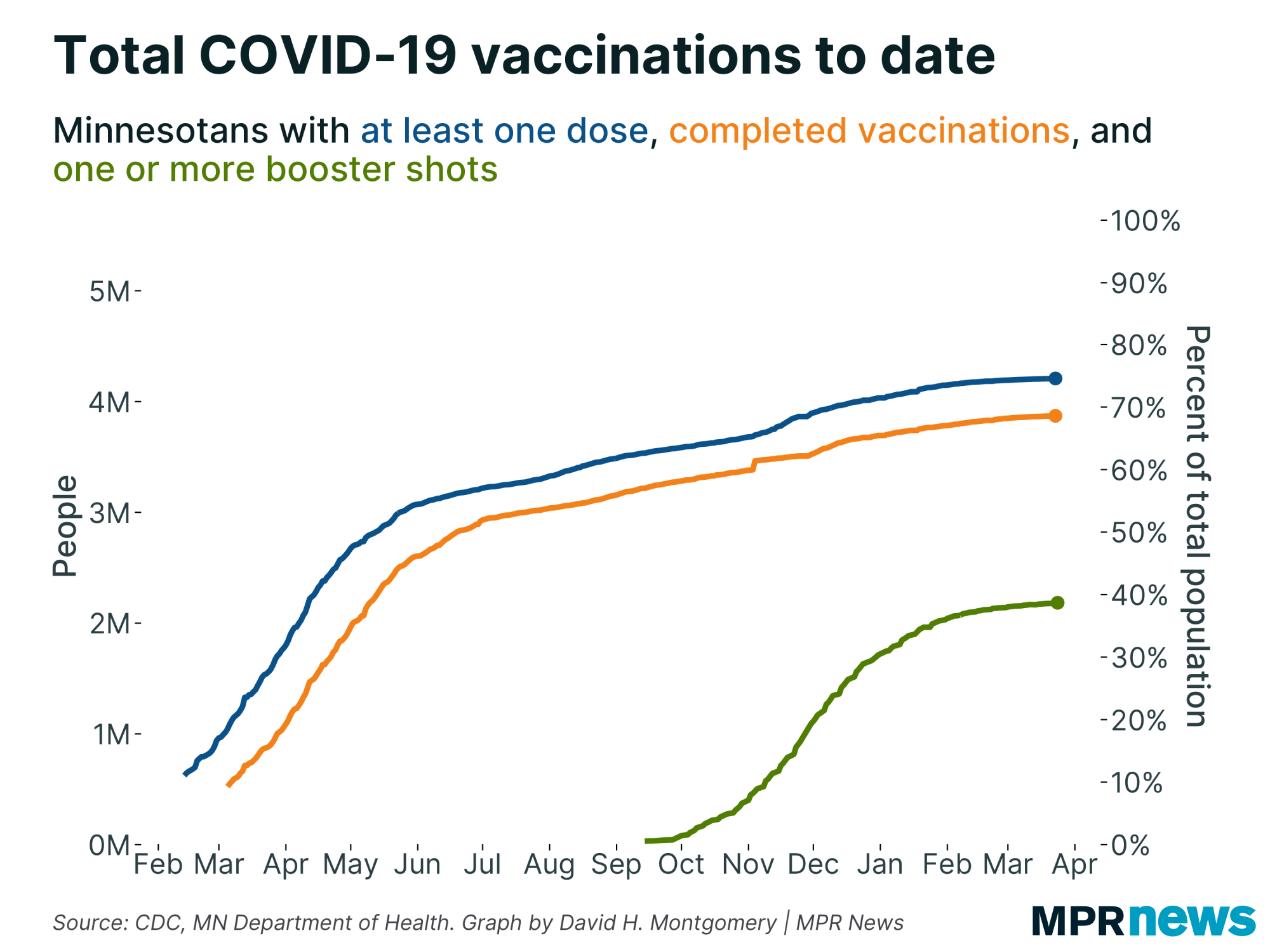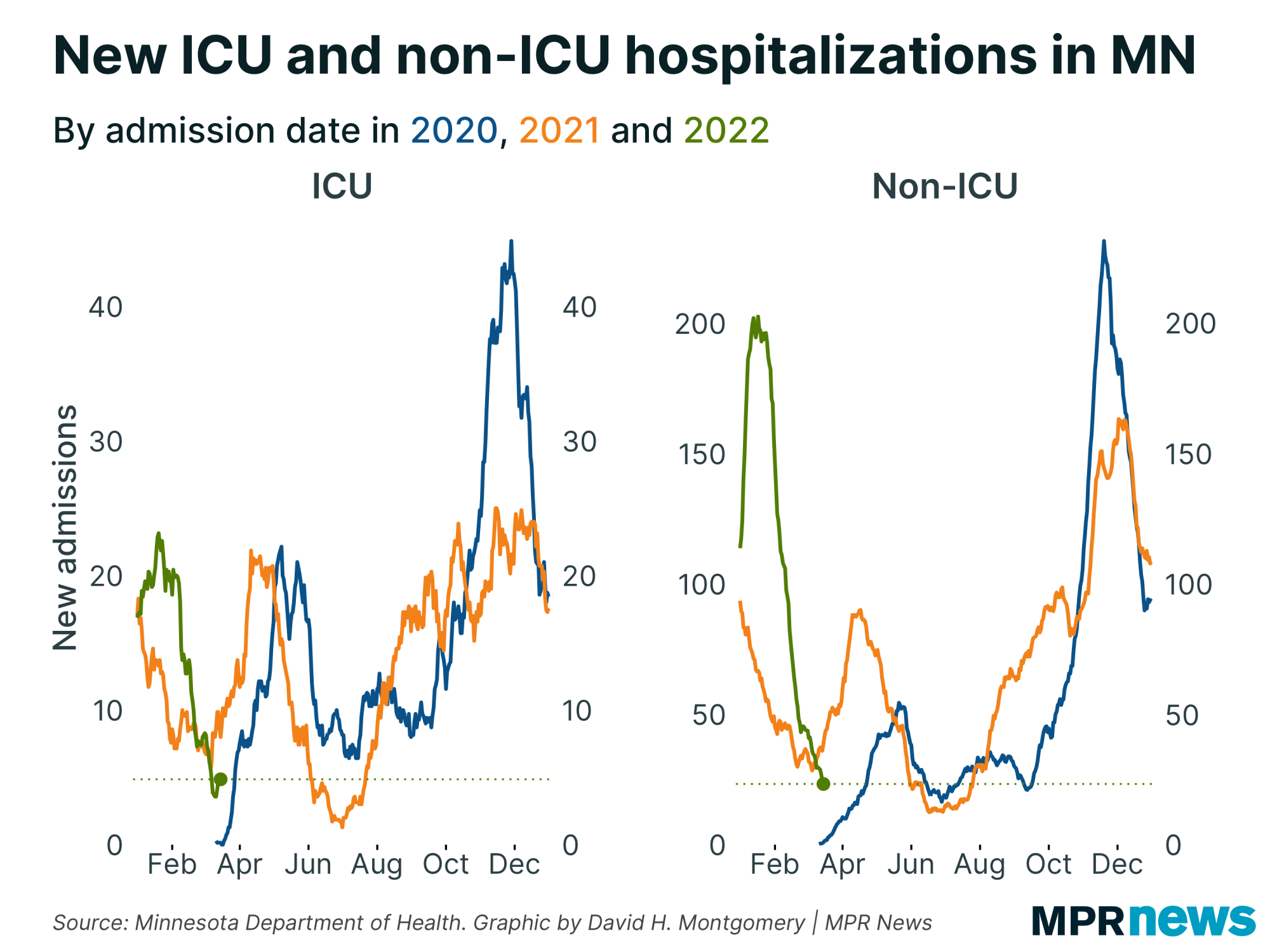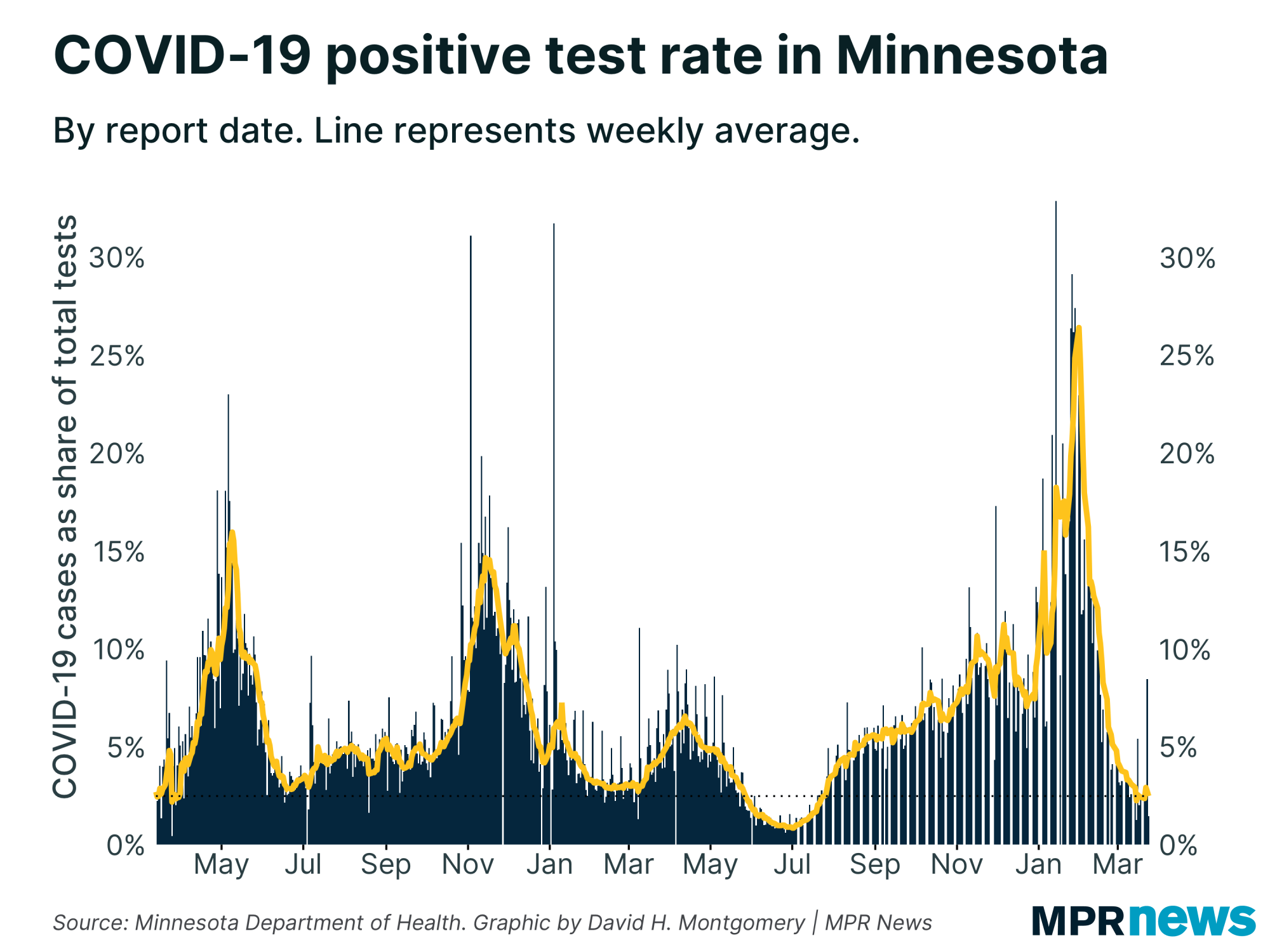Latest on COVID-19 in MN: Vaccine counts rebound but trend still flat

Go Deeper.
Create an account or log in to save stories.
Like this?
Thanks for liking this story! We have added it to a list of your favorite stories.
3 things to know:
Walz: Every Minnesotan should be able to get a shot by summer
Daily vaccination count improves but trend still flat
Officials: Kids, families should now get tested every 2 weeks
Updated 4:30 p.m.
Minnesota’s COVID-19 vaccination effort is starting to show some evidence of a rebound, although the overall trend line remains frustratingly flat.
The state Health Department on Friday reported 41,558 more vaccinations, higher than last Friday and one of the highest single-day counts since the agency began posting data in late December.

Officials had anticipated a busy week as some 45,000 weather-delayed shots made their way into the state atop the expected 100,000 doses from federal authorities. It didn’t start to turn up in the numbers until Friday.
The new data comes a day after Gov. Tim Walz said every Minnesotan should be able to get a shot by the summer. While the counts reported Friday are encouraging, the trend line shows no signs yet of a surge similar to the one in late January and early February.
Turn Up Your Support
MPR News helps you turn down the noise and build shared understanding. Turn up your support for this public resource and keep trusted journalism accessible to all.
About 14.5 percent of Minnesotans had received at least one dose as of the the Friday update, with about 7.3 percent completely vaccinated.

More than 45 percent of Minnesotans 65 and older have received at least one shot currently. However, people in that age group are still struggling to make appointments to get vaccinated.
Minnesota currently ranks 19th among states in doses administered per 100,000 people, according to data collected by the federal Centers for Disease Control and Prevention.

Uptick in cases but metrics relatively stable
Vaccination concerns aside, Minnesota’s COVID-19 numbers show the state holding fairly steady, although there has been an uptick in new and active cases.
Hospitalization rates remain encouraging and down to levels from last fall. There were 263 people with COVID-19 in Minnesota hospitals as of Thursday; 60 patients needed intensive care.

Known, active cases rose to 7,367 after sitting below 7,000 for four consecutive days. The trend line remains stable.

Twelve newly reported deaths raised Minnesota’s toll to 6,462. Among those who’ve died, about 63 percent had been living in long-term care or assisted living facilities; most had underlying health problems.

The state’s recorded 482,978 total confirmed or probable cases so far in the pandemic, including 1,156 reported Friday. About 97 percent of Minnesotans known to be infected with COVID-19 in the pandemic have recovered to the point where they no longer need to be isolated.

Cases spread across age groups, regions
People in their 20s still make up the age bracket with the state’s largest number of confirmed cases — more than 91,000 since the pandemic began, including 48,000 among people ages 20 to 24.

The number of high school-age youth confirmed with the disease has also grown, with more than 37,000 total cases among those ages 15 to 19 since the pandemic began.
Although less likely to feel the worst effects of the disease and end up hospitalized, experts worry youth and young adults will spread it unknowingly to older relatives and members of other vulnerable populations.
People can have the coronavirus and spread COVID-19 when they don’t have symptoms.
Regionally, most parts of Minnesota are down significantly from the late November, early December spike as well as a January blip.
There has been an uptick in cases in northwestern Minnesota recently, although it’s unclear why.

On Wednesday, Dan Huff, an assistant state health commissioner, expressed concern about the uptick seen in the northwest and west-central regions, saying it showed the state needed to remain vigilant against spread.
“The vaccines are coming and continue to increase, and that is fantastic news, but we’re not there yet,” he said, adding, that the state doesn’t have enough people vaccinated “to stop the next wave.”
Caseloads still heaviest among people of color
In Minnesota and across the country, COVID-19 has hit communities of color disproportionately hard in both cases and deaths. That’s been especially true for Minnesotans of Hispanic descent for much of the pandemic.
Even as new case counts continue to fall from their late November, early December peaks, the data shows Latino people continue to be hit hard.
Distrust of the government, together with deeply rooted health and economic disparities, have hampered efforts to boost testing among communities of color, officials say, especially among unauthorized immigrants who fear their personal information may be used to deport them.
Distrust by communities of color “is the thing that has plagued us for some time,” Walz said Tuesday at a briefing promoting vaccinations for people of color.
Health Commissioner Jan Malcolm said that it’s been a “real problem” not having data broken down by race and ethnicity but that the state may have data to share by next week.
Families with kids urged to test every 2 weeks
With kids increasingly returning to school buildings and sports, Minnesota public health officials are urging Minnesota families with children to get tested every two weeks for COVID-19 now until the end of the school year.
While it’s not a requirement, the effort will help protect progress the state’s making to limit the spread of the virus, Huff told reporters Wednesday.

Families can use the state’s testing at home program, go to a community testing site or work with their own health provider, Huff said.
“We’re not asking schools or youth organizations to provide this testing,” he added. “This is a recommendation for all youth, in-person, returning to school, youth sports, extracurricular activities.”
Huff noted that the state’s teacher testing shows a very low level of COVID-19 in that population to date. Huff said some 72,000 educators have been tested with only a .35 percent positive test rate. Officials find a 5 percent rate as cause for concern.
Walz on Thursday said 88 percent of the state’s public school districts and charter schools are offering some in-person learning now.
‘We can’t do it fast enough’
Walz laid out plans Thursday to get COVID-19 shots into the arms of every Minnesotan who wants one by the summer while keeping the state’s short-term focus on residents 65 and older. He even suggested the Minnesota State Fair was possible this year.
"The finish line's there. Let's finish this thing,” Walz said in remarks that were mostly upbeat about the state’s current circumstances on the one-year anniversary of the first Minnesotan showing COVID-19 symptoms.
Walz said the state wouldn’t expand eligibility for COVID-19 vaccines until at least 70 percent of residents age 65 and older get a first dose — a threshold officials expect to reach by the end of March.
Once that threshold has been met, Minnesota will open vaccinations to others based on underlying health conditions and workplace exposure risk, including some 45,000 employees working at Minnesota food processing plants.
The governor and other officials indicated that their timeline was conservative and expressed hope that it would move faster as more supplies — including the single-dose Johnson & Johnson vaccine now under federal review — become available.
"We can't do it fast enough. Every single governor in this country is hearing the same things,” Walz said of vaccinations. “It's simply a supply and demand issue, folks There's not enough vaccines still at this point in time.”
Correction (March 5, 2021): An earlier version of this story described the total vaccinations as a percentage of Minnesota’s 16 and older population. The percentage includes the entire population.
COVID-19 in Minnesota
Data in these graphs are based on the Minnesota Department of Health's cumulative totals released at 11 a.m. daily. You can find more detailed statistics on COVID-19 at the Health Department website.
Developments from around the state
New U of Minn. center to research anti-racism in public health
A new center at the University of Minnesota will focus on anti-racism research in public health.
The center’s launch was spurred by the COVID-19 pandemic and the racial justice movement that followed the police killing of George Floyd. Founding director Rachel Hardeman said she hopes the center will strengthen public health education when it comes to racial disparities.
As a Black woman with deep roots in Minnesota, Hardeman said she was passionate about creating a vision that would engage communities in the research and come up with solutions.
"Certainly it's not the norm to go into community and say ‘you tell me what we should be asking, you tell me what needs to be done, what do you need to feel safe?’” Hardeman said, “and so much of the knowledge and so much of the solutions are out there but we just haven't asked the right people."
The university received a $5 million donation from Blue Cross and Blue Shield of Minnesota to launch the center.
— Riham Feshir | MPR News
St. Paul middle, high schools set to reopen April 14
The St. Paul public schools will resume in-person learning at middle school and high school buildings on April 14, following spring break and a two-day planning session for staff.
Students who want to continue distance learning will be able to do so if they choose.
Most of these students haven't been in the classroom since the pandemic closed school buildings nearly a year ago.
The Minneapolis public school system will welcome back special education students to in-person classes on March 22. On April 12, high school students will be able to return. Middle school students will return the week of April 19.
— Elizabeth Shockman | MPR News
Entertainment coalition challenges COVID curbs on bar games in lawsuit
The owners and operators of darts, pool tables and other games in hundreds of bars are joining the legal challenge to COVID-19 restrictions.
The Minnesota Operators of Music and Amusement Association said Thursday that it was filling a lawsuit in Ramsey County, asking a judge to roll back an 11 p.m. curfew and capacity limits at bars, bowling alleys and other hospitality businesses.
Dan Lieberman, president of American Amusements, one of 25 companies that are part of the association, said they have about 700 employees, and have been very hard hit by COVID-19 restrictions.
“This is not a political issue,” Lieberman said. “It's a business issue. filing a lawsuit was a last resort. Our member businesses have been closed for five in the last 12 months with very little revenue coming in for almost half a year.”
Bars and restaurants, youth sports and mask mandate opponents have previously brought legal challenges to COVID-19 restrictions, none of which have succeeded in Minnesota.
— Tim Nelson | MPR News
Minnesota Senate passes business reopening bill
The Minnesota Senate passed legislation Thursday to allow businesses to fully reopen amid the COVID-19 pandemic if they have a plan for operating safely.
The bill is aimed at helping bars, restaurants and other businesses that were forced to close or scale back operations under emergency orders issued by DFL Gov. Tim Walz.
Sen. Andrew Mathews, R-Princeton, said many struggling businesses are looking for relief.
“Since we’re a year out from the emergency orders, we now have vaccines that are out, we have cases that are down, we have hospitalizations that are down, and it’s time to start unwinding these emergency orders that have left one person in charge of too many crucial decisions,” Mathews said.
The bill also requires legislative approval of any future emergency order closures.
The vote was 38-29, with some Democrats joining all Republicans. A companion bill was just introduced Thursday in the DFL House.
Several Senate Democrats spoke against the bill. Sen. Jennifer McEwen, DFL-Duluth, was among those who raised concerns about the safety of workers.
“If we’re going to be giving the green light to businesses to reopen and to require their employees to appear in person, we are in effect making those workers front-line workers,” McEwen said.
In the House, Republicans pushed for an immediate vote on a bill to provide a concrete timeline for expanding capacity at restaurants, theaters, event centers and other restricted businesses. The attempt was withdrawn after it was clear it would fail.
“Our event centers can’t make it much longer,” said Rep. Dave Baker, R-Willmar. “And the longer we wait, the worse it is, the deeper the hole, the more weddings leave the state of Minnesota or go down the road to the bar. It isn’t working any longer.”
A committee planned to discuss the proposal on Friday.
— Tim Pugmire and Brian Bakst | MPR News
Top headlines
Front-line food plant workers up next for COVID-19 vaccine: Workers at Minnesota’s food processing plants — hit hard by coronavirus early in the pandemic — will be among those next in line to receive the COVID-19 vaccine.
Biden marks 50M vaccine doses in first 5 weeks in office: On Thursday, President Joe Biden marked the administration of the 50 millionth dose of COVID-19 vaccine since his swearing-in. The moment came days after the nation reached the devastating milestone of 500,000 coronavirus deaths and ahead of a meeting with the nation's governors on plans to speed the distribution even further.
Businesses that tapped pandemic loan program now find it may cost them: Unless the Legislature steps in, thousands of Minnesota businesses might owe taxes on the federal loans they used to keep employees on the payroll during the pandemic.
Dear reader,
Political debates with family or friends can get heated. But what if there was a way to handle them better?
You can learn how to have civil political conversations with our new e-book!
Download our free e-book, Talking Sense: Have Hard Political Conversations, Better, and learn how to talk without the tension.




